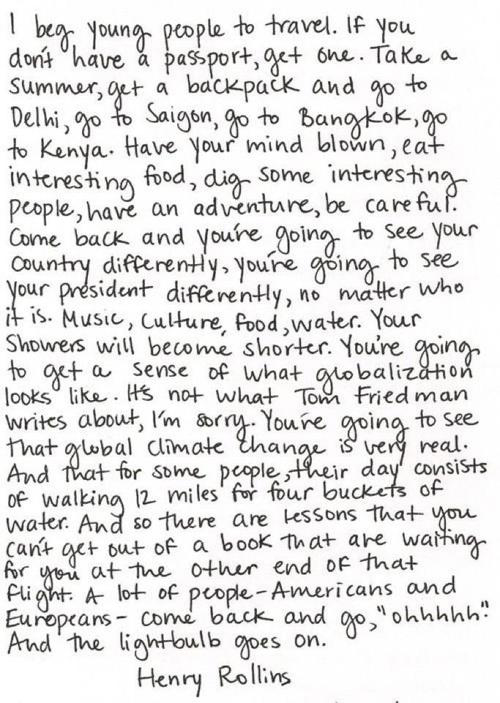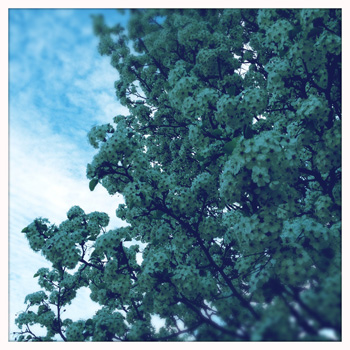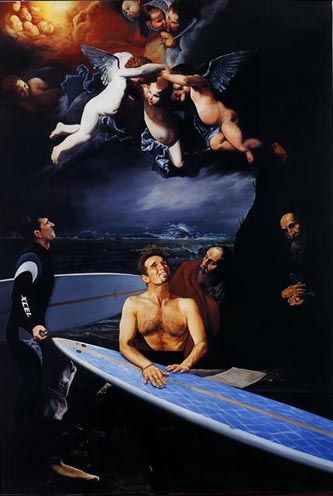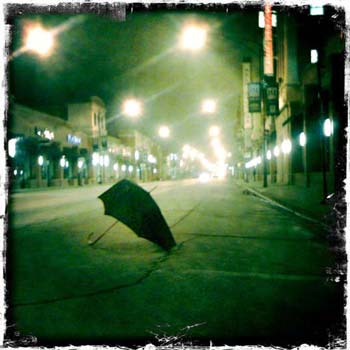T’ao Ch’ien (365-427 CE)
This calligraphic version of “Substance, Shadow, and Spirit” — with black ink on rice paper — is by Rong Shang of Bejing, China, and San Francisco, 2006.
“Every one, noble or base, brilliant or dumb, clings tenaciously to life, which is nothing but a delusion. Therefore, I have given voice to Substance and Shadow to express their grief, and let the Soul or Spirit resolve their problems by following the course of Nature. Those who are concerned with this matter understand my intention.”
Substance to Shadow
Earth and heaven endure forever,
Streams and mountains never change.
Plants observe a constant rhythm,
Withered by frost, by dew restored.
But man, most sentient being of all,
In this is not their equal.
He is present here in the world today,
Then leaves abruptly, to return no more.
No one marks that there is one man less —
Not even friends and family think of him;
The things that he once used are all that’s left
To catch their eye and move them to grief.
I have no way to transcend change,
That it must be, I no longer doubt.
I hope you will take my advice:
When wine is offered, don’t refuse.
Shadow to Substance
No use discussing immortality
When just to keep alive is hard enough.
Of course I want to roam in paradise,
But it’s a long way there and the road is lost.
In all the time since I met up with you
We never differed in our grief and joy.
In shade we may have parted for a time,
But sunshine always brings us close again.
Still this union cannot last forever —
Together we will vanish into darkness.
The body goes; that fame should also end
Is a thought that makes me burn inside.
Do good, and your love will outlive you;
Surely this is worth your every effort.
While it is time, wine may dissolve care
That is not so good a way as this.
Spirit’s Solution
The Great Potter cannot intervene —
All creation thrives of itself.
That Man ranks with Earth and Heaven,
Is it not because of me?
Though we belong to different orders,
Being alive, I am joined to you.
Bound together for good or ill
I cannot refuse to tell you what I know:
The Three August Ones were great saints
But where are they living today?
Though P’eng-tsu lasted a long time.
He still had to go before he was ready.
Die old or die young, death is the same,
Wise or stupid, there is no difference.
Drunk every day you may forget,
But won’t it shorten your life span?
Doing good is always a joyous thing
But no one has to praise you for it.
Too much thinking harms my life;
Just surrender to the cycle of things,
Give yourself to the waves of the Great Change
Neither happy nor yet afraid.
And when it is time to go, then simply go
Without any unnecessary fuss.
Translation by Angela Jung Palandri, “The Taoist Vision: A Study of T’ao Yuan-ming’s Nature Poetry.” Journal of Chinese Philosophy. 15 (1988): 97-121.















 From “On (Digital) Photography: Sontag, 34 Years Later”:
From “On (Digital) Photography: Sontag, 34 Years Later”:















































